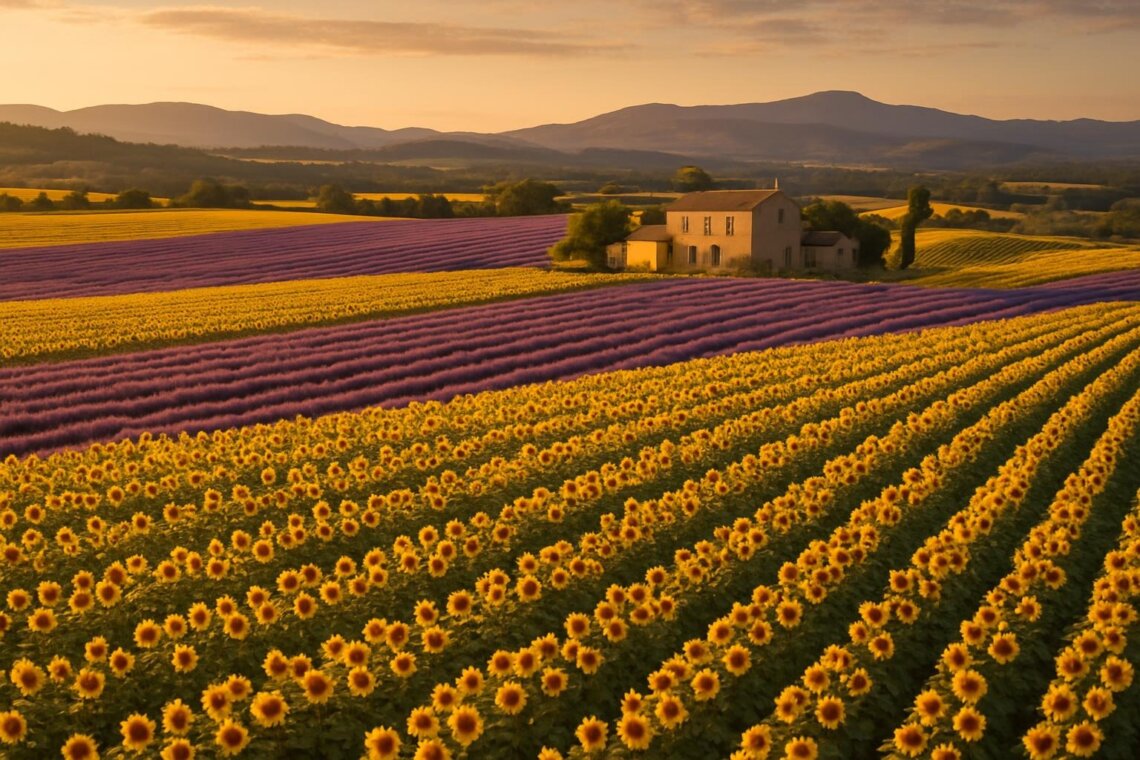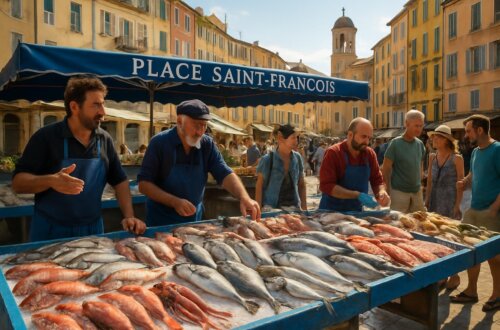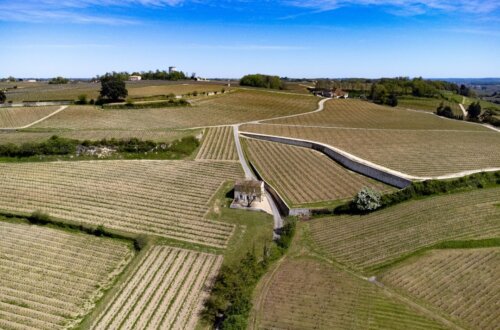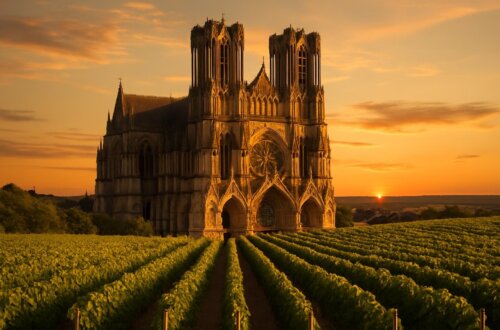
Sunflowers in Provence, France: Best Time, Places & Travel Tips
Sunflowers in Provence, France: Best Time, Places & Travel Tips
Picture this: endless golden sunflower fields stretching toward the horizon, their cheerful faces following the Mediterranean sun across a brilliant blue sky. The sunflower fields of Provence are among France’s most iconic summer sights, drawing photographers, artists, and dreamers from every corner of the globe. These vibrant landscapes have inspired countless artists, including Vincent van Gogh, and continue to represent the very essence of a perfect Provençal summer.
Located in southeastern France, Provence is a region synonymous with lavender fields, world-class vineyards, and those Instagram-famous sunflower meadows that seem to glow with their own inner light. Whether you’re planning a romantic getaway, seeking the perfect photography backdrop, or simply wanting to experience one of nature’s most joyful displays, timing your visit correctly is crucial.
This comprehensive guide will reveal exactly when to visit Provence for peak sunflower blooms, where to find the most spectacular fields, essential photography tips to capture that perfect shot, and practical travel advice to make your sunflower adventure unforgettable. From the famous Valensole Plateau to hidden gems in the Drôme Provençale, prepare to discover why these golden fields have captured hearts for generations.
When to See Sunflowers in Provence (Best Season to Visit)
The magic window for sunflower viewing in Provence is surprisingly short, making timing absolutely critical for your visit. Peak sunflower season runs from late June through early August, with the most spectacular displays typically occurring during the first three weeks of July.
However, Mother Nature doesn’t follow a strict calendar, and blooming periods can vary significantly based on weather conditions. A particularly warm spring can push blooms earlier, while cooler temperatures or late planting can delay the spectacle until mid-July. This variability means checking current conditions before your trip is essential.
Regional timing differences add another layer of complexity to planning your sunflower adventure:
- Valensole Plateau: Generally blooms from late June to mid-July, with peak beauty around July 4-15
- Luberon Region: Slightly later, typically peaking from July 10-25
- Vaucluse and Avignon Areas: Often the latest bloomers, with peak season from mid-July through early August
Here’s an insider tip that can double your photographic rewards: combine sunflower season with lavender blooms. The overlap period from late June through mid-July offers the rare opportunity to capture both iconic Provençal crops in their full glory. Imagine photographing golden sunflowers with purple lavender rows creating natural leading lines – it’s a photographer’s paradise that occurs only during this magical window.
Weather plays a crucial role in bloom quality and duration. Sunflowers typically face east in the morning and follow the sun westward throughout the day, so planning your photography sessions around this natural behavior will yield the most dynamic shots.

Best Places to See Sunflowers in Provence
Valensole Plateau: The Crown Jewel
The Valensole Plateau stands as Provence’s most famous sunflower destination, and for good reason. This elevated plain between the Verdon River and Durance Valley creates an almost surreal landscape where lavender and sunflower fields exist in perfect harmony, separated only by country roads that seem designed for scenic driving.
The plateau’s unique geography creates microclimates that often extend blooming seasons, giving visitors more flexibility in their timing. Key photography spots include the roads around Saint-Jurs, Valensole village itself, and the smaller hamlets scattered across the plateau. The D6 and D8 roads offer the most accessible viewing points, with numerous pull-offs perfect for safely capturing that perfect shot.
What makes Valensole extraordinary is the juxtaposition of crops. You’ll find sunflower fields directly adjacent to lavender rows, creating natural color contrasts that seem almost too perfect to be real. The plateau’s elevation also provides panoramic views that include the distant Alps on clear days, adding dramatic backdrop elements to your compositions.
Luberon Region: Rolling Hills and Hidden Gems
The Luberon offers a more intimate sunflower experience, with smaller fields tucked into rolling hills and medieval villages providing constant photographic opportunities. Unlike the vast expanses of Valensole, Luberon’s sunflower fields are often mixed with other crops, creating a patchwork landscape that changes around every bend.
Gordes, perched dramatically on its hilltop, serves as an excellent base for sunflower hunting. The village itself is worth extensive exploration, but the real treasures lie in the surrounding countryside. Roussillon, famous for its ochre cliffs and colorful houses, often has sunflower fields within walking distance of the village center.
Bonnieux offers some of the region’s most photogenic combinations of sunflowers and architecture. The village’s elevated position provides sweeping views over the Luberon Valley, where sunflower fields create golden patches among the green landscape.
The beauty of the Luberon approach is the element of discovery. Unlike the predictable vastness of Valensole, here you’ll round a corner to suddenly encounter a hillside covered in sunflowers, with a 12th-century church tower rising above them – moments that feel like personal discoveries rather than tourist destinations.
Vaucluse & Avignon Area: Accessibility Meets Beauty
For travelers based in Avignon or arriving by train, the Vaucluse region provides excellent sunflower viewing with superior accessibility. The proximity to major transportation hubs makes this area ideal for visitors without rental cars, though having your own wheels still provides the most flexibility.
The region around Orange particularly shines during sunflower season. Large commercial fields spread across the flatter terrain, creating those classic “endless field” photographs that define the Provence sunflower experience. The D975 and D950 roads between Orange and Carpentras pass through prime sunflower country, with multiple viewing opportunities.
What distinguishes this area is the integration with wine country. Many sunflower fields exist adjacent to renowned vineyards, offering unique opportunities to combine flower viewing with wine tasting. The contrast between neat vineyard rows and wild sunflower expanses creates compelling landscape photography opportunities.
Other Scenic Areas: Hidden Treasures
For adventurous travelers seeking to escape the crowds, Drôme Provençale offers spectacular sunflower fields with significantly fewer tourists. This northern extension of Provence maintains the region’s agricultural character while providing more space to enjoy the landscapes in solitude.
The area around Grignan and Taulignan features rolling sunflower fields that seem to flow like golden rivers through the landscape. These locations require more planning to reach but reward visitors with authentic farming landscapes largely unchanged by tourism.
Alpes-de-Haute-Provence brings dramatic mountain backdrops to sunflower photography. Fields near Manosque and Sisteron offer the unique combination of golden flowers against Alpine silhouettes, creating images that capture Provence’s geographical diversity.

Photography Tips for Sunflower Fields
Capturing the perfect sunflower photograph requires more than just pointing and shooting. These golden giants demand specific techniques and timing to truly showcase their majesty.
Golden hour reigns supreme for sunflower photography. The hour after sunrise and before sunset provides the warm, soft light that makes sunflowers appear to glow from within. During these times, the contrast between the bright yellow petals and deep centers becomes more pronounced, while harsh shadows disappear.
Morning photography offers additional advantages beyond beautiful light. Sunflowers naturally face east at dawn, creating uniform compositions when shooting from the west. Morning air is typically calmer, reducing flower movement that can blur shots. Plus, you’ll often have fields entirely to yourself during these early hours.
Compositional techniques can transform good sunflower photos into extraordinary ones:
- Use leading lines created by planting rows to draw viewers deep into the image
- Include human elements for scale – a person walking between rows emphasizes the fields’ vastness
- Combine foreground and background elements: close sunflowers with distant lavender or villages
- Vary your height: ground-level shots emphasize individual flowers, while elevated positions show field patterns
Essential gear recommendations for sunflower photography:
- Polarizing filter: reduces glare and enhances color saturation
- Wide-angle lens: captures field vastness and dramatic skies
- Telephoto lens: isolates individual flowers and compresses distance
- Tripod: essential for sharp images in low light conditions
- Drone: where legally permitted, provides unique aerial perspectives
Respect the environment while photographing. Stay on designated paths and farm roads – trampling crops damages farmers’ livelihoods and future growing potential. Many fields have clear walking paths specifically for visitors, so use these designated routes exclusively.
Bee safety is crucial during sunflower season. These flowers attract numerous pollinators, particularly in early morning when activity peaks. Wear closed-toe shoes, move slowly around flowers, and avoid strong fragrances that might attract unwanted attention from these busy workers.
The Cultural & Historical Significance of Sunflowers in Provence
Sunflowers carry deep cultural meaning in Provence that extends far beyond their agricultural value. These flowers have become symbols of joie de vivre – that uniquely French celebration of life’s simple pleasures that defines Provençal culture.
The connection between sunflowers and Vincent van Gogh adds profound artistic significance to these landscapes. Van Gogh painted his famous sunflower series while living in Arles from 1888-1889, during a period when he found deep inspiration in Provence’s brilliant light and vibrant colors. Walking through today’s sunflower fields, visitors often feel connected to the same visual experiences that inspired one of history’s greatest artists.
Van Gogh wrote to his brother Theo about his fascination with sunflowers: “The sunflower is mine, in a way.” This personal connection to the flower reflected his broader relationship with Provence, where he produced some of his most celebrated works. Modern visitors can follow the Van Gogh Trail through Arles, then drive to nearby sunflower fields to experience landscapes that haven’t fundamentally changed since the artist’s time.
Symbolism in French culture positions sunflowers as representations of loyalty, adoration, and devotion – qualities that reflect their natural tendency to follow the sun’s path across the sky. This solar connection has made sunflowers symbols of positivity and enlightenment in French art and literature.
The agricultural tradition of sunflower cultivation in Provence dates back centuries, though commercial production expanded significantly in the 20th century. Today, these flowers serve dual purposes: producing valuable sunflower oil while creating the tourism landscapes that draw millions of visitors annually.
Practical Travel Tips for Visiting Sunflower Fields
Transportation significantly impacts your sunflower viewing experience. While organized tours exist, renting a car provides maximum flexibility for discovering the most beautiful and less crowded fields. Sunflower fields often lie along small country roads that public transportation doesn’t serve, making personal transportation nearly essential for serious flower viewing.
Suggested road trip itinerary for optimal sunflower and lavender viewing:
Day 1: Arrive in Avignon, drive to Valensole Plateau (1.5 hours), explore fields around Saint-Jurs and Valensole village, overnight in Manosque or Moustiers-Sainte-Marie.
Day 2: Morning photography session on Valensole Plateau, afternoon drive to Gordes via Apt, evening exploration of Gordes village.
Day 3: Sunrise photography near Gordes, visit Roussillon and surrounding sunflower fields, drive to Bonnieux for afternoon shots.
Day 4: Explore lesser-known fields in Luberon, wine tasting in Châteauneuf-du-Pape region, return to Avignon.
Accommodation recommendations vary by budget and style preferences. Manosque offers practical hotel options close to Valensole Plateau. Gordes provides luxury experiences but at premium prices. Apt serves as an excellent compromise, offering good value while maintaining easy access to major sunflower areas.
Safety considerations extend beyond basic travel precautions:
- Bee awareness: Sunflowers attract numerous pollinators; wear appropriate clothing and move calmly
- Sun protection: Provence’s summer sun is intense; bring sunscreen, hats, and plenty of water
- Private property respect: Most sunflower fields are privately owned; respect barriers and no-trespassing signs
- Traffic awareness: Popular viewing spots can create traffic congestion on narrow country roads
Combining activities maximizes your Provence experience beyond sunflower viewing. Local markets in villages like Apt, Gordes, and Manosque showcase regional specialties including lavender products, local wines, and artisanal foods. Wine tasting opportunities abound in areas like Châteauneuf-du-Pape and Luberon appellations.
Best viewing times occur during weekday mornings when tourist crowds are smallest and lighting conditions optimal. Weekend visits, particularly Saturday and Sunday mornings, can become crowded at popular locations like Valensole Plateau.

FAQs About Sunflowers in Provence
Can you pick sunflowers in Provence? Absolutely not. All sunflower fields in Provence are privately owned agricultural operations. Picking flowers damages the farmers’ crops and income. Respect private property by admiring and photographing only. Many farms post clear signs prohibiting flower picking, and violations can result in fines.
Do sunflower fields rotate locations each year? Yes, farmers practice crop rotation to maintain soil health and prevent disease buildup. Fields that displayed sunflowers one year might grow wheat, lavender, or other crops the following season. This rotation means your favorite photography spot from last year might look completely different during your return visit. Always research current field locations before traveling.
Are there sunflower festivals in Provence? While Provence doesn’t host major sunflower-specific festivals like some regions, local villages often incorporate sunflowers into summer celebrations. The Valensole Lavender Festival in July frequently features sunflower displays alongside lavender celebrations. Village markets during peak bloom season often sell sunflower-themed products and decorations.
What’s the best time of day for photography? Early morning (6-8 AM) and late afternoon (6-8 PM) provide optimal lighting conditions. Morning offers the advantage of sunflowers facing east, creating uniform compositions when shooting from the west. Evening light tends to be warmer but requires more careful positioning as flowers may cast shadows on each other.
How long do sunflower blooms last? Individual fields typically maintain peak bloom for 1-2 weeks, though this varies based on weather conditions and planting schedules. The overall regional season lasts about 6-8 weeks, with different fields reaching peak bloom at different times throughout the season.
Conclusion
The sunflower fields of Provence represent more than just agricultural landscapes – they embody the very soul of summer in southern France. These golden expanses, stretching endlessly under Mediterranean skies, offer experiences that linger in memory long after the petals have faded and the season has passed.
From the vast commercial fields of Valensole Plateau to the intimate hillside patches of the Luberon, each sunflower destination provides unique photographic opportunities and cultural connections. The brief but spectacular blooming season from late June through early August demands careful planning, but rewards visitors with some of Europe’s most iconic natural displays.
Remember that successful sunflower viewing requires flexibility and respect – flexibility to adjust your plans based on current blooming conditions, and respect for the farmers whose hard work creates these magnificent landscapes. Combine your sunflower adventure with lavender field visits, village exploration, and wine tasting to create a truly comprehensive Provençal experience.
Whether you’re following in Van Gogh’s footsteps through the artistic landscapes of Arles, capturing the perfect golden hour photograph on the Valensole Plateau, or discovering hidden fields in the rolling hills of Luberon, Provence’s sunflowers offer transformative travel experiences that connect us to nature’s cyclical beauty and the enduring appeal of rural France.

Few sights capture the essence of a Provençal summer like endless fields of sunflowers swaying under the Mediterranean sun. Plan your visit during peak bloom, bring your camera, and prepare to fall in love with one of France’s most joyful natural spectacles. The golden fields of Provence are waiting to welcome you into their bright, beautiful world.
Have you experienced the magic of Provence’s sunflower fields? Share your photos and stories in the comments below, and don’t forget to save this guide for planning your own golden adventure!




